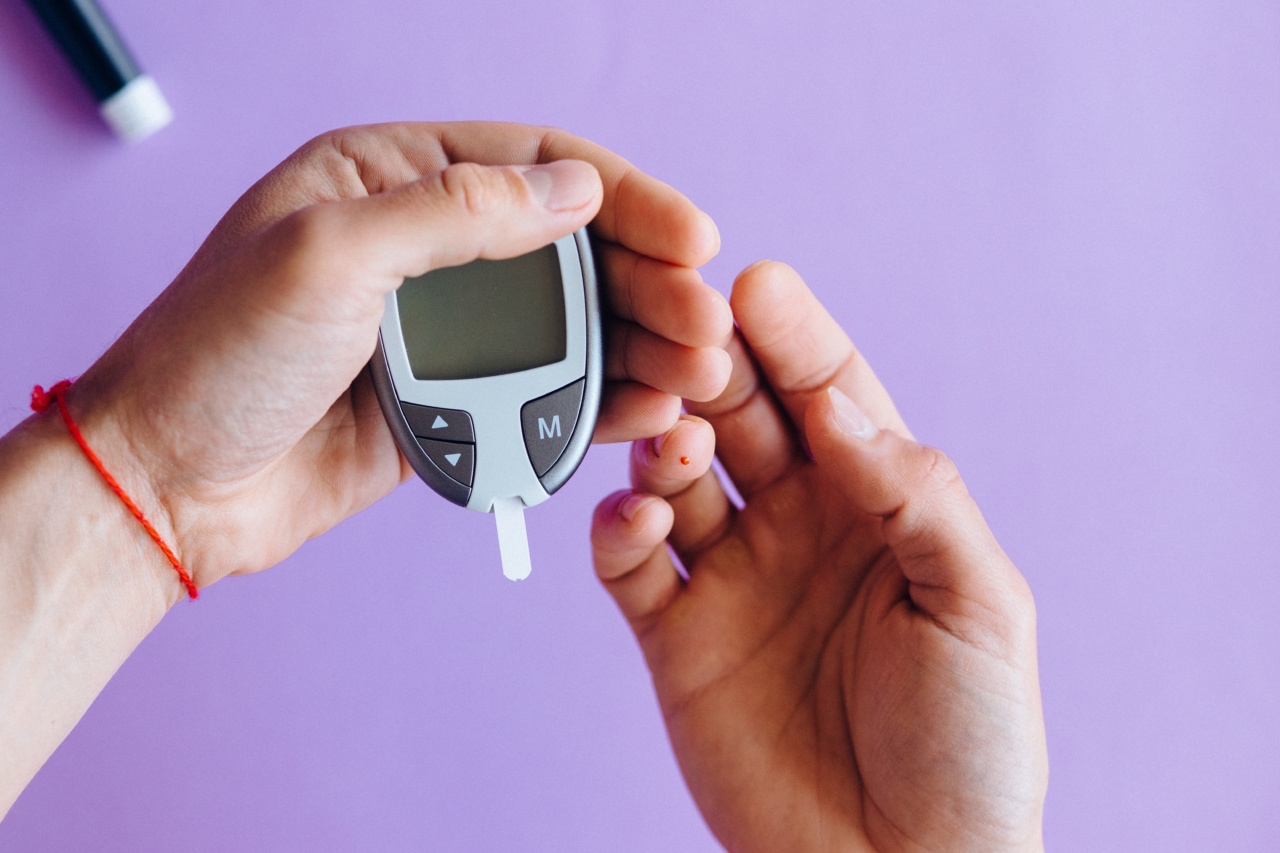Diabetes and high blood pressure are two common medical conditions that often go hand in hand. In fact, studies have shown that individuals with diabetes are more likely to develop high blood pressure, and vice versa.
The connection between these two health issues is not fully understood, but researchers believe that there are several factors at play. This article explores the link between diabetes and high blood pressure and discusses ways to manage and prevent these conditions.
What is Diabetes?
Diabetes is a chronic condition characterized by high levels of sugar (glucose) in the blood. There are two main types of diabetes: type 1 and type 2.
Type 1 diabetes is an autoimmune disease in which the immune system mistakenly attacks and destroys the insulin-producing cells in the pancreas. Type 2 diabetes, on the other hand, is a metabolic disorder that occurs when the body becomes resistant to the effects of insulin or fails to produce enough insulin to maintain normal blood sugar levels.
Understanding High Blood Pressure
High blood pressure, or hypertension, occurs when the force of blood against the walls of the arteries is consistently too high.
This puts extra strain on the heart and blood vessels, increasing the risk of heart disease, stroke, and other complications. High blood pressure is often referred to as a silent killer because it typically does not cause noticeable symptoms until serious damage has already occurred.
The Relationship Between Diabetes and High Blood Pressure
Research has shown that there is a strong association between diabetes and high blood pressure.
According to the American Diabetes Association, approximately two-thirds of people with diabetes also have high blood pressure or take medication to lower their blood pressure. The reasons for this connection are complex and multifactorial, but some common underlying factors contribute to the development of both conditions.
1. Obesity
Obesity is a significant risk factor for both diabetes and high blood pressure. Excess body weight, particularly around the waistline, increases insulin resistance and raises blood pressure.
Fat cells also release inflammatory substances that can further impair insulin action and damage blood vessels, leading to hypertension.
2. Insulin Resistance
Insulin resistance, a hallmark of type 2 diabetes, is closely linked to the development of high blood pressure. When the body becomes resistant to the effects of insulin, it compensates by producing more insulin.
This excess insulin can constrict blood vessels, increase sodium retention, and stimulate the release of hormones that raise blood pressure.
3. Renin-Angiotensin System
The renin-angiotensin system plays a crucial role in regulating blood pressure. Diabetes can disrupt this system and cause imbalances in the levels of angiotensin II, a hormone that constricts blood vessels and increases blood pressure.
High levels of angiotensin II can also promote inflammation and oxidative stress, contributing to the development of cardiovascular complications in individuals with diabetes.
4. Kidney Function
Both diabetes and high blood pressure are leading causes of kidney disease. Diabetes damages the blood vessels and filters in the kidneys, impairing their function and leading to the accumulation of waste products in the body.
High blood pressure, on the other hand, can directly damage the small blood vessels in the kidneys and reduce their filtering capacity. The combination of diabetes and high blood pressure greatly accelerates the progression of kidney disease.
5. Lifestyle Factors
Unhealthy lifestyle choices, such as poor diet, lack of physical activity, and smoking, increase the risk of both diabetes and high blood pressure.
A diet rich in processed foods, saturated fats, and sodium can contribute to obesity, insulin resistance, and elevated blood pressure. Sedentary habits and tobacco use also damage the blood vessels and promote insulin resistance.
Managing and Preventing Diabetes and High Blood Pressure
While the link between diabetes and high blood pressure is strong, there are several strategies individuals can adopt to manage and prevent these conditions:.
1. Healthy Eating
A balanced diet that is low in saturated fats, cholesterol, and sodium is essential for managing both diabetes and high blood pressure. Focus on incorporating fruits, vegetables, whole grains, lean proteins, and healthy fats into your meals.
Limit processed foods, sugary drinks, and excessive salt intake.
2. Regular Physical Activity
Engaging in regular exercise helps control blood sugar levels, reduce weight, improve insulin sensitivity, and lower blood pressure. Aim for at least 150 minutes of moderate-intensity aerobic activity, such as brisk walking or cycling, every week.
Consider incorporating strength training exercises at least twice a week for additional benefits.
3. Medication Adherence
If you have been prescribed medication for either diabetes or high blood pressure, it is crucial to take it as directed by your healthcare provider.
Proper medication adherence is necessary to manage these conditions effectively and prevent complications.
4. Blood Pressure Monitoring
Regular monitoring of blood pressure is essential for individuals with diabetes. Aim for a target blood pressure of less than 130/80 mmHg, as recommended by the American Diabetes Association.
If your blood pressure consistently exceeds this threshold, consult your healthcare provider for appropriate management strategies.
5. Weight Management
If you are overweight or obese, losing even a small amount of weight can significantly improve both diabetes and high blood pressure. Focus on gradual and sustainable weight loss through a combination of healthy eating and regular physical activity.
Consult a registered dietitian or healthcare professional for personalized guidance.
6. Stress Reduction
Chronic stress has been shown to exacerbate both diabetes and high blood pressure.
Find healthy ways to manage stress, such as practicing relaxation techniques, engaging in hobbies, spending time in nature, or seeking support from loved ones or a mental health professional.
Conclusion
Diabetes and high blood pressure often coexist and share common risk factors and underlying mechanisms.
Obesity, insulin resistance, imbalances in the renin-angiotensin system, kidney dysfunction, and unhealthy lifestyle choices contribute to the development of these conditions.
However, by adopting a healthy lifestyle, adhering to prescribed medications, and regularly monitoring blood pressure and blood sugar levels, individuals can effectively manage and reduce the risk of complications associated with diabetes and high blood pressure.




























